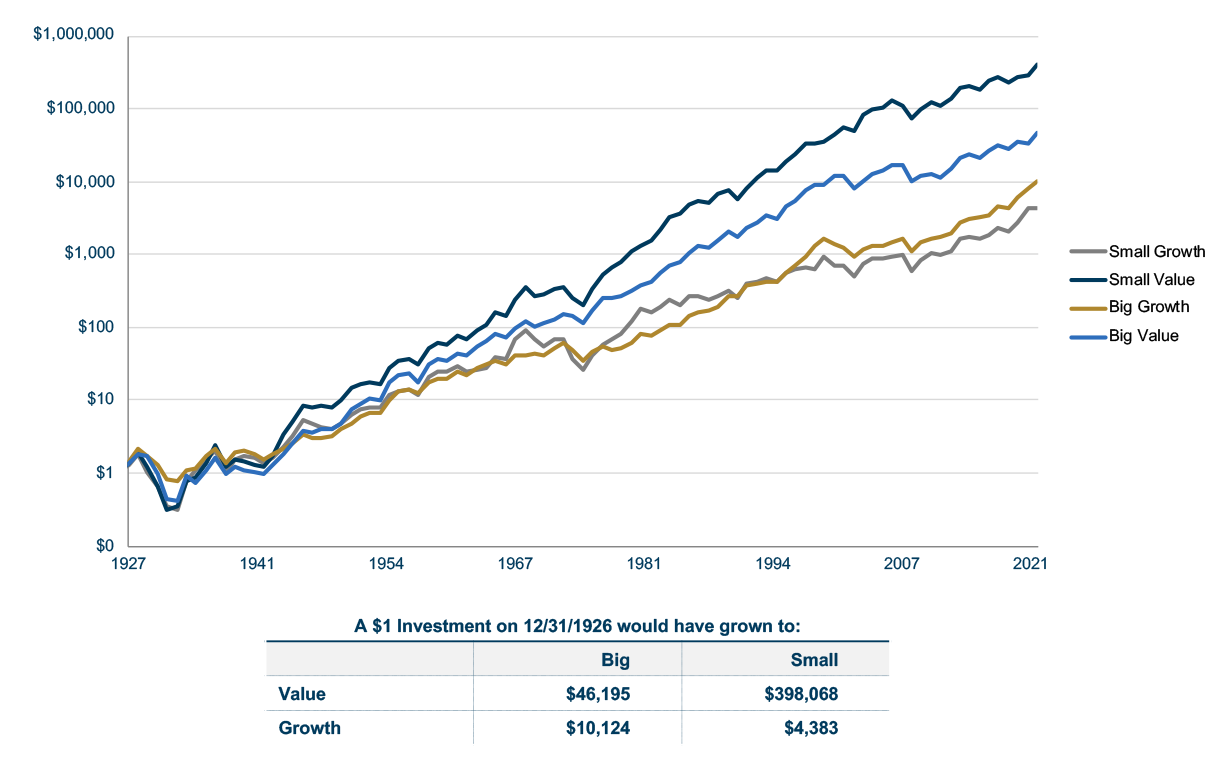"Price always matters."
—William P. Rice Jr., CEO
The goal at Anchor is to provide clients with a higher-than-average stream of current income, better returns in down markets, and competitive returns over the course of a market cycle.
Our Philosophy
Traditional value investing based on meticulous research

We believe the best way to meet our clients’ goals is through traditional value investing that is based on meticulous research and picking individual stocks. Rather than try to match the performance of a benchmark, we build our portfolios from stocks whose prices we believe do not reflect our analysis of their intrinsic value.
The companies we invest in can be in any industry or market sector, as long as the stock is selling at a price that is attractive to us and has what we believe to be a well-defined path to reach fair value.
Anchor portfolios are diversified, but we view our rigorous security selection and monitoring discipline as our primary risk management tool.
Value vs. Growth
Growth of a Hypothetical $1 investment in 1927*

Academic research predicts that value will have a long-term structural advantage over Growth. Historical data confirm it.
*Source: http://mba.tuck.dartmouth.edu/pages/faculty/ken.french/data_library.html#Research – The graph is based on the historical data for “6 Portfolios Formed on Size and Book-to-Market”.
The information used in this presentation is based on a hypothetical account created by the source. The returns presented are exclusive of fees and are gross returns. The underlying historical market data is provided by the Center for Research in Security Prices (CRSP). Famma/French construct a vast library of research portfolios based on this data, six of which are “6 Portfolios formed on Size and Book to Market.” Price, dividend, shares, and volume data are historically adjusted for split events to make data directly comparable at different times during the history of a security.
Small Value, Small Growth, Big Value, and Big Growth represent four Famma/French Research Portfolios formed on Size and Book-to-Market. The “6 Portfolios formed on Size and Book-to-Market” are as follows: (1) Small Value; (2) Small Neutral; (3) Small Growth; (4) Big Value; (5) Big Neutral; (6) Big Growth. We exclude the two “Neutral” portfolios to focus on Big vs. Small, and Value vs. Growth. The portfolios, which are constructed at the end of each June, are the intersections of 2 portfolios formed on size (market equity, ME) and 3 portfolios formed on the ratio of book equity to market equity (BE/ME). The size breakpoint for year t is the median NYSE market equity at the end of June of year t. BE/ME for June of year t is the book equity for the last fiscal year end in t-1 divided by ME for December of t-1. The BE/ME breakpoints are the 30th and 70th NYSE percentiles. For more information, please visit http://mba.tuck.dartmouth.edu/pages/faculty/ken.french/index.html.
The performance results are based upon a hypothetical model and may have inherent limitations. Hypothetical performance does not involve financial risk, and no hypothetical trading record can completely account for the impact of financial risks associated with actual market conditions. There are numerous other factors related to the markets in general, or to the implementation of any specific trading strategy, which cannot be fully accounted for, and all of which can adversely affect actual trading results.
No representation is being made that any account will or is likely to achieve profits or losses similar to those shown. The hypothetical results do not represent actual recommendations or trading by Anchor and should not be considered as indicative of the skills of the investment adviser. During the period shown, the Adviser was not managing client accounts according to the strategy depicted.
The information contained herein is based on sources we deem reliable, but is not guaranteed by Anchor. Past performance is not indicative of future results. Inherent in any investment is the possibility of loss. The returns presented are not directly representative of Anchor products. The information is for informational purposes only and should not be considered investment advice or a recommendation of any particular strategy or investment product. Anchor shall have no obligation to update this information, nor have liability for decisions based on this information.
Anchor's Value Process
At Anchor, we seek value by scrutinizing each company’s fundamentals. In a world of indices, ETFs, and high-speed algorithm-driven trading, we determine a company’s value by inspecting the infrastructure, examining the books, and asking management the tough questions. From these data, we calculate an actual dollar figure for both the value of the company in the current market and the potential value assuming new product and management strategies are successful.
We frequently monitor our holdings and top candidates, and recheck our calculations to ensure our investment thesis remains valid. Although our process is price sensitive, our preference is to make long-term investments: owning companies whose growth potential consistently expands due to innovative management.
“We believe that the best form of risk management is careful security selection.”
William P. Rice, CEO
